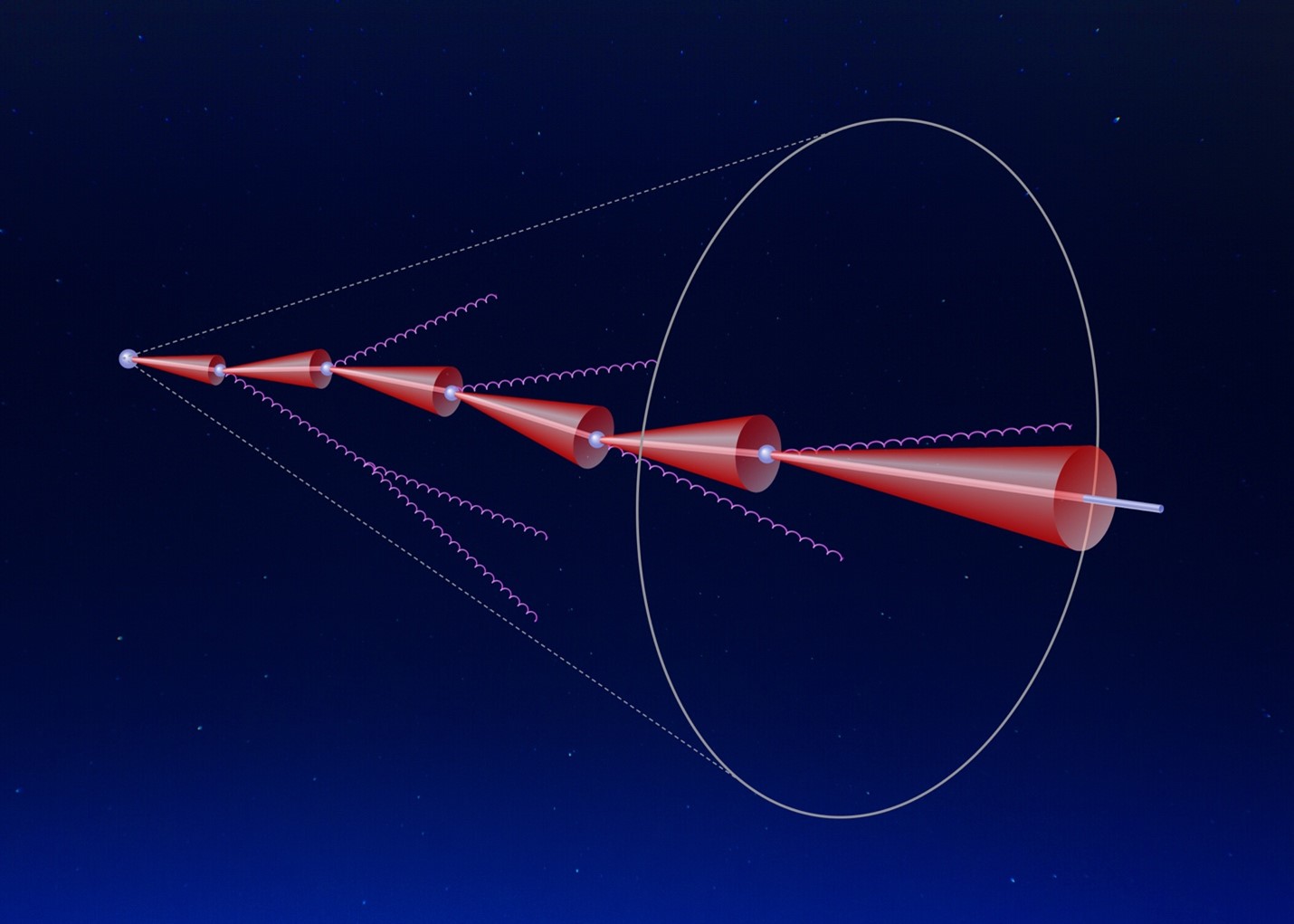Scientists Report Direct Observation of the Dead-Cone Effect in Quantum Chromodynamics
Novel techniques allow the first direct observation of a predicted effect that results in the suppression of gluon radiation emitted by a heavy quark.

The Science
Particle colliders produce energetic quarks and gluons. The strong force makes these particles radiate additional quarks and gluons in a process resembling a cascade. The cascade ends with formation of hadrons that can be detected at CERN’s A Large Ion Collider Experiment (ALICE). The cascade’s structure enables scientists to study the laws that govern interactions between quarks and gluons and exhibits a dependence on the mass of the initiating quark. This structure can reveal an effect that scientists have predicted but have not directly observed until now – the formation of a “dead-cone,” or “empty” region around a heavy quark that cannot radiate any gluons.The Impact
Theoreticians predicted the dead-cone effect 30 years ago. However, scientists were not able to directly observe this effect until now. New techniques, based on jet substructure and innovative methods and analysis carried out by a team of ALICE Collaborators, led to this achievement. The findings confirm a fundamental feature of the theory of strong interactions. This is the theory of how quarks and gluons interact to form protons and neutrons and hold nuclei together. The findings also provide direct experimental observation of the non-zero mass of the charm quark, one of the heavier of the six types of quarks.Summary
ALICE is an enormous undertaking at CERN’s Large Hadron Collider. This result, which involved more than 1,000 authors from 149 institutions worldwide, represents the first direct measurement of the dead-cone, a fundamental prediction of quantum chromodynamics, the theory of the strong interaction (the force between quarks and gluons). Quarks and gluons are the fundamental particles that make up composite hadrons such as the proton, neutron, and pion.The techniques, introduced by the lead analysis team from Oak Ridge National Laboratory, iteratively associated daughter particles with the substructure of a cascade of quarks and gluons. In doing so, the physicists were able to access the cascade process of the charm quark and directly uncover the dead-cone effect. The measurement was directly sensitive to the mass of charm quarks, prior to their binding into hadrons. This measurement paves the way to future research, such as study of the dead-cone effect for quarks heavier than the charm quark (bottom or top quarks) and in heavy ion collisions.
Contact
Kenneth ReadOak Ridge National Laboratory
readkf@ornl.gov
Funding
This work was supported by the Department of Energy Office of Science, Nuclear Physics program.Publications
Acharya, S., et al. (ALICE Collaboration), Direct observation of the dead-cone effect in quantum chromodynamics, Nature 605, 440-446 (2022). [DOI: 10.1038/s41586-022-04572-w]Related Links
CERN news: ALICE makes first direct observation of a fundamental effect in particle physicsHighlight Categories
Program: NP
Performer: University , DOE Laboratory
Additional: Non-DOE Interagency Collaboration



